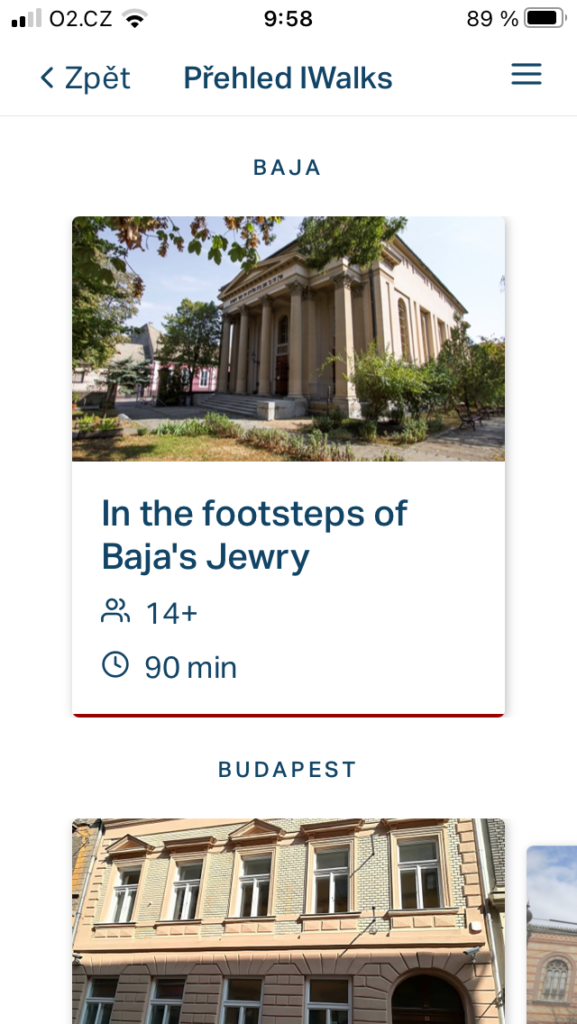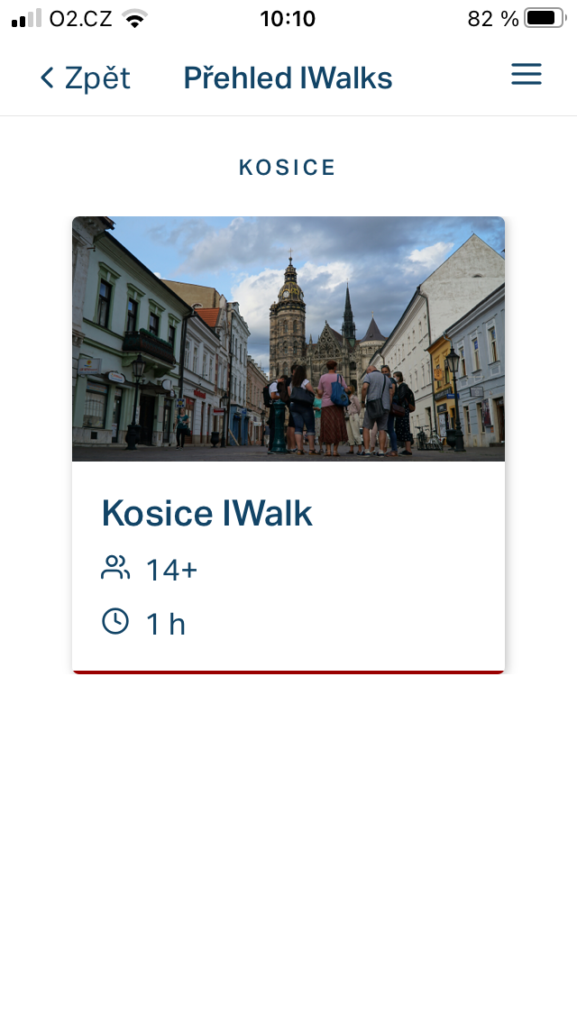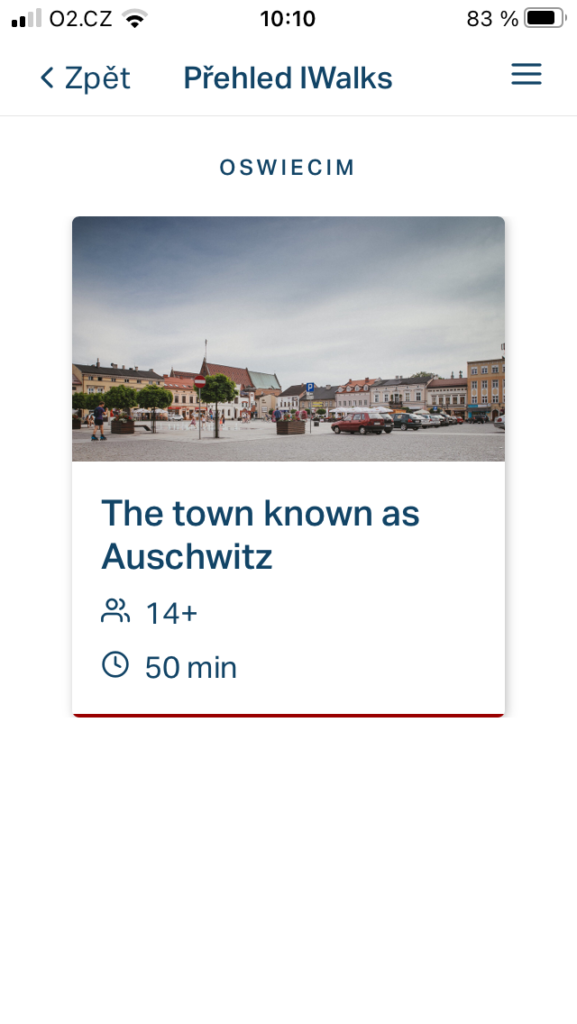A two-day international online conference entitled Visegrad IWalks: Teaching Democracy through Digital Local History took place at the end of April 2021. This event turned out to be the culmination of the joint project, developed by four organizations from the countries making up the Visegrád Four and focused on the use of testimonies of Holocaust survivors in portraying local history.
The outcome of the project is tangible – by the end of March 2021 the USC Shoah Foundation accessed to the public – through its mobile application IWalk – materials prepared precisely within this project that expand and supplement the sightseeing experience in the former Ghetto in Terezín by adding video testimonies of its former coerced inhabitants. The background materials for these IWalks were prepared by the Department of Education of the Terezín Memorial.
The IWalk application was developed by the USC Shoah Foundation – The Institute for Visual History and Education based in Los Angeles as one of the tools to showcase to the public the potential of its own archive, containing more than 50,000 video testimonies of Holocaust survivors and witnesses. Users of the mobile application can view survivors´ testimonies directly on the locations whose history they recount; furthermore, users get acquainted with the broader historical context of the stories by means of accompanying texts and questions.
Partners in the project, initiated by the Hungarian foundation Zachor Alapítvány, were Slovakia´s Nadácia Milana Šimečku (Milan Šimečka Foundation), Polish Centrum Żydowskie w Oświęcimiu (Auschwitz Jewish Center), with the Terezín Memorial representing the Czech Republic. Each participating organization devised IWalks for its own localities. Under way in the years 2019–2021, the project was supported by the International Visegrad Fund.
It was originally scheduled for the period November 2019 to October 2020. But there were delays in completing the project´s partial goals due to the outbreak of the COVID-19 pandemic in early 2020 and the subsequent complications caused by the anti-epidemic measures declared by the Czech government and other countries.
The initial stage of the project was marked predominantly by research. First, five suitable localities were selected in the territory of the former Terezín Ghetto to mark out a sightseeing tour, which was followed by collecting information from the available literature and other sources. Concurrently, the USC Shoah Foundation Archive searched for testimonies by former Ghetto inmates relating to the selected localities. Work got under way on drawing up didactic guidelines for training school groups.
Then, in June 2020, the Terezín Memorial hosted a seminar for Czech schoolteachers who were introduced to the methodology of designing IWalks projects and who tested the first IWalk version for Terezín. (For more information on the seminar see Newsletter No. 3/2020.) Materials were then modified following practical testing and discussions. The second pilot project involving schoolteachers was held at the end of August 2020, with a workshop prepared for 14 teachers of the secondary teacher training, hotel management and services school in Litoměřice. The prepared educational materials were used and subjected to professional evaluation during the workshop. For their part, the teachers shared their highly relevant reflections and comments, conducive to partial modifications and drafting of accompanying questions.
At the beginning of the school year 2020/2021, we succeeded in testing this IWalk version, still using tablets containing video testimonies and printed texts and photographs, with several groups of students from the above-mentioned school in Litoměřice and those attending the Opava-based Mendel high school.
This multiyear project was brought to its end during this year´s April conference, attended – in addition to the partner organizations – by many schoolteachers and people from various walks of life. The gathering also presented newly created IWalks pertaining to the Holocaust history localized in the Slovak town of Košice, Poland´s Oświęcim (not the concentration and extermination camp but the town itself), Terezín and the Hungarian town of Baja. In addition to presenting the above-mentioned educational materials, another goal facing the conference was how to motivate participants towards creating new IWalks projects.
Based on documents of the Terezín Memorial´s Department of Education





